The Complete Guide
to Archery
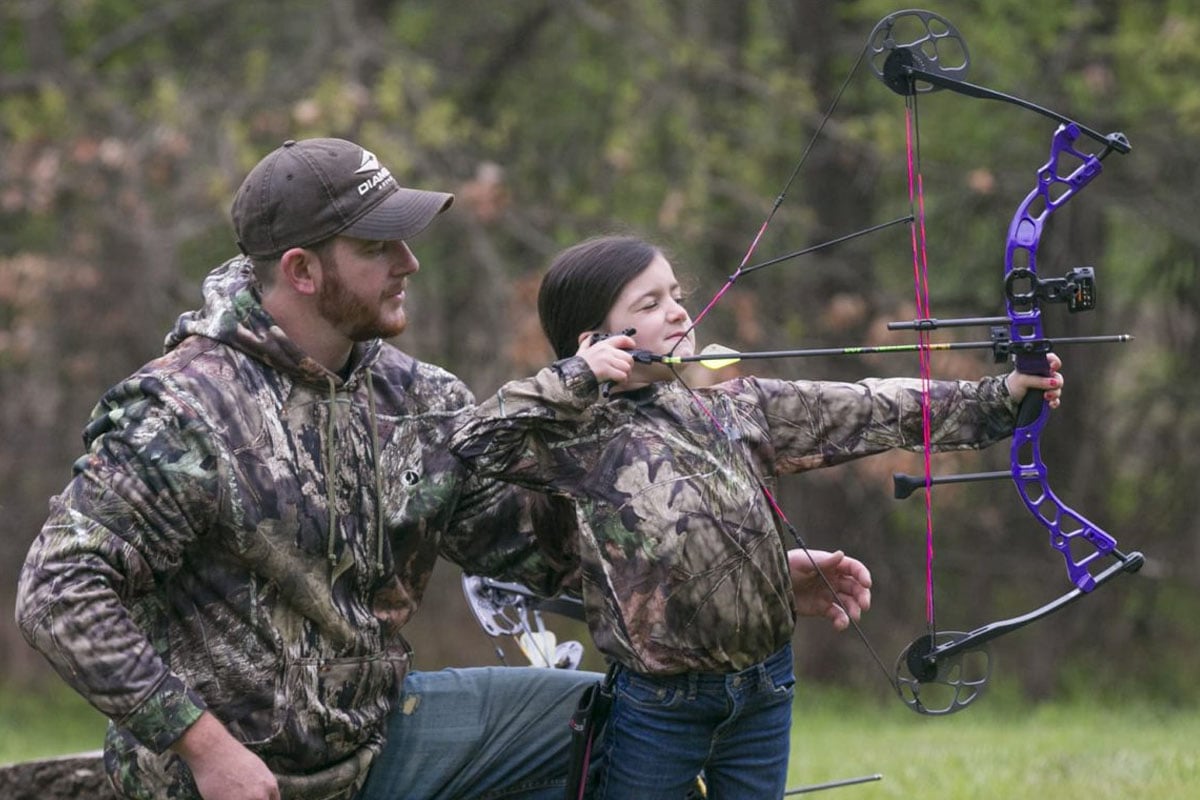
Archery is a fun, accessible sport with a rich history. Whether you’re looking for a new method of hunting, a way to get some light exercise, a competitive league sport, or a fun activity for the whole family, archery can provide.
When you’re beginning archery, it’s important to know the basic gear, the types of bows, how to aim, where to practice, types of archery, and hunting techniques. This guide will provide you everything you need to know to get started or to level up your game.
- Getting Started
- Types of Archery
- Bows
- Draw Length
- Draw Weight
- Parts of an Arrow
- Arrow Material
- Essential Gear
- How to Shoot a Bow and Arrow
- Practicing
- Tips for Getting Started in Archery
- Hunting
Getting Started
You don’t have to buy all of the gear in order to find out if you like archery. Just call your local archery or sporting goods store: they’ll be able to show you the bows, and you may be able to sign up for a few lessons if you’re interested. This shop will become your resource for all of your archery questions, and the associates can help you select the right equipment for your unique needs.
If you’re taking lessons, you’ll likely be able to rent bows to use. Even a single introductory lesson can get you started and help you understand the basics of archery. Group lessons can be a cost-effective way of taking lessons, and you’ll meet other people who are interested in archery just like you are.
Archery has many benefits: it’s low-impact, but helps you build core and upper body strength. It’s accessible for folks with disabilities, can be practiced year-round, and can be a great recreational activity for families and youth. It can also be a great way for hunters to get back to nature and try out a different set of skills when taking a target.
Types of Archery
There are a few types of archery you can practice, depending on your interests.
Type of Archery & Overview
Each of these types of archery is scored in a different way. If you are looking at participating in archery competitions, you’ll likely want to hone your skills at a specific type. However, if you are pursuing archery for fun and/or exercise, you might mix and match, or be less invested in keeping track of specific points.
Bows
There are many bow options on the market, and you’ll need to get to know your own archery needs and style in order to select the right one. Most beginners use a recurve bow, which requires less strength for the speed of the arrow. The compound bow’s complex system makes it more powerful but more difficult for beginners to operate.
Experienced archers sometimes use longbows (also known as traditional bows), which are the medieval Robin Hood-style bows you’ve seen in the movies. These require quite a lot of strength, and generally don’t have the many additions that modern bows have. Some archers use crossbows, as well. We’ll go through the four types of bows so you can decide which is right for you.
Recurve Bow

Recurve Bow
A recurve bow is so named because while the main part of the bow curves towards the archer, the ends of it curve away from the archer. This makes it easier to shoot than a traditional longbow, and it’s therefore a great option for beginners. Recurve bows are often easy to take apart and transport, and can be built out to use sights and other archery accessories.
Benefits of a recurve bow:- Easy to take apart
- Portable
- Can use sights/other accessories
- Beginner-friendly
Recommended Recurve Bows:
Compound Bow
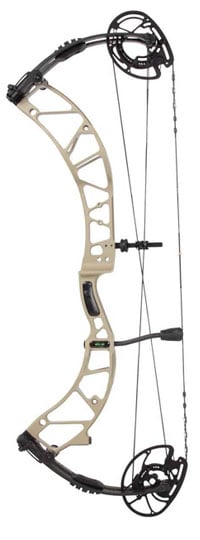
Compound Bow
Compound bows offer a very modern take on the age-old practice of archery. These bows offer more power through a system of pulleys, cables, and cams. This makes it easier for the archer to loose an arrow: it still requires strength, but the archer will be able to hold their draw (and take aim) longer thanks to the pulley system. Compound bows are synthetic rather than wood, which means they are less susceptible to the elements. They are complex and the archer must learn how to operate them properly, but they will add additional accuracy, distance, and velocity for the same amount of strength.
Benefits of a compound bow:- Durable
- More powerful thanks to complex modern design
- Archer can take longer to aim
Recommended Compound Bows:
Longbow
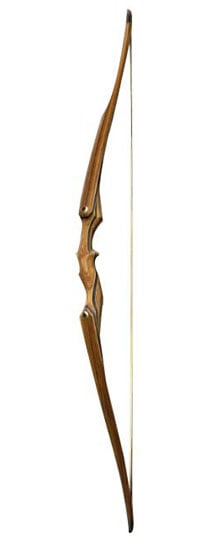
Longbow
When you’re thinking of a Robin Hood-style bow and arrow, you’re picturing a longbow, also called a traditional bow. While their heyday may have been the 14th to 16th centuries, these bows are still in use today by archers who love the feeling of engaging in archery’s long history. A longbow is just a curved piece of wood, usually the same height as the archer. They typically cannot be accessorized with sights or arrow rests, and they are not as powerful as the other bows on this list.
Benefits of a longbow:- Simple
- Feeling of connection to history
Recommended Longbows:
Crossbow
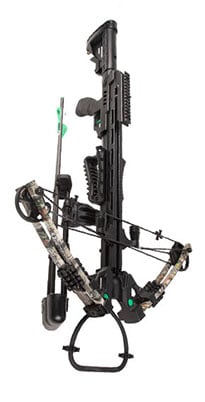
Crossbow
While the bows we’ve discussed so far are positioned vertically, the crossbow gives a horizontal bow that is operated through a crank system. With a crossbow, the trigger mechanism holds the arrow in place until the archer is ready to fire, meaning you can take as long as you need to aim with no extra effort. Crossbows are most often used in hunting and target archery. Be aware: crossbows are regulated differently from other bows in many states, so you’ll want to check your local regulations before you invest in one.
Benefits of a crossbow:- Take as long as you need to aim
- Powerful
Recommended Crossbows:
Draw Length
The draw length is related to your height, and indicates how far back you can pull the bow string. In order to aim properly, you need to be able to pull the bowstring back to the same distance every time. If it’s uncomfortable or a struggle for you, this will only get worse as you go through more and more repetitions.
You can determine your draw length by having a representative from the archery store measure you with a “draw length indicator shaft,” or you can calculate it yourself. Just divide your height (in inches) by 2.5. This will give you your draw length. You can also determine your draw length using the following draw length quick reference chart based on average arm span.
| Arm Span | Draw Length |
|---|---|
| 53"-55" | 20"-21” |
| 56"-58" | 21"-22” |
| 57"-59" | 22”-23” |
| 60"-62" | 23”-24” |
| 63"-65" | 24”-25” |
| 66"-68" | 25”-26” |
| 69"-71" | 26”-27” |
| 72"-74" | 27”-28” |
| 75"-77" | 28”-29” |
| 78"-80" | 29”-30” |
Draw Weight
Your draw weight refers to how much force you have to exert to pull the bowstring back. The heavier the draw weight, the harder it is to pull the string back. Here are some general metrics for appropriate draw weights:
| Age | Draw Weight |
|---|---|
| Children (under 18) | 5-20 lbs. |
| Young adults (18-21) | 15-30 lbs. |
| Adults (22+) | 25+ lbs. |
Of course, draw weight will ultimately depend on the individual, but this is a general guide. You can determine your preferred draw weight by trying out a series of bows. Recurve bows will have a single draw weight that is set for the bow, while compound bows are generally adjustable to various draw weights.
Parts of an Arrow
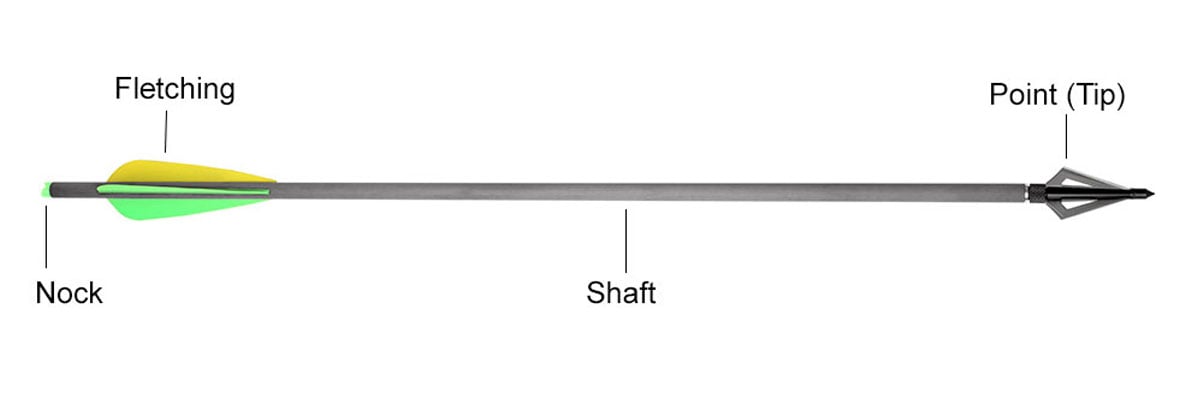
We’ve got the bow figured out – if there’s one other iconic part of archery, it’s the arrow. Let’s dive into the essential knowledge of arrows you’ll need to become a solid archer.
There’s some basic vocabulary you need in order to understand arrows. Keep this vocabulary guide handy as you’re still learning:
- Shaft - Body of the arrow
- Nock - Part that clips on the bowstring
- Fletchings - Wing-like things next to the nock
Arrow Material
So what should your arrows be made of? Each archer has their own preferences, but here are the three basic options.
Material Types & Benefits/Drawbacks
| Material | Benefits | Drawbacks |
|---|---|---|
| Carbon Fiber |
|
|
| Aluminum |
|
|
| Wood |
|
|
It’s also important to consider the material of your fletchings. Fletchings will usually come either as plastic or feathers. Plastic fletchings (called vanes) are durable and waterproof, and are usually preferred for compound bows and modern recurves. Feathers are great for indoor competitive archers who need to maximize their arrow’s stability.
Essential Gear
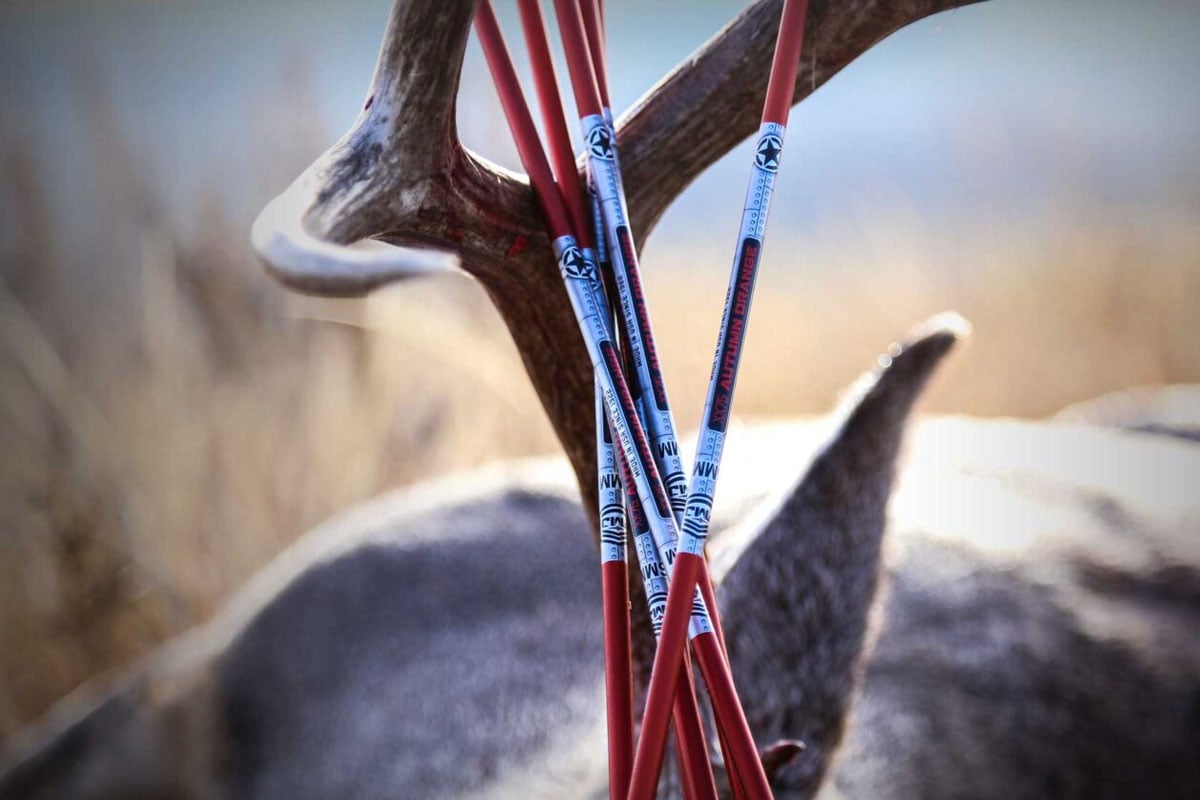
After the obvious bow and arrows, there are a few other key things that every archer needs. Your specific needs will depend on your archery goals: are you competitive, or recreational? Will you be hunting, and if so, what species? If you’re just starting out in archery, it’s good to keep it simple. Your specific needs will become clear as you get more used to the sport.
Bow Equipment
Bow Equipment Item & Function
| Bow String | A bow string is sold separately from the bow itself, and should be 1-2” shorter than your bow. You’ll want to make sure you get a good quality bow string, and you’ll need to maintain it with regular waxing. |
| Arrow Rest | An arrow rest makes shooting accurately quite a bit easier, which is very nice for a beginner. Most arrow rests can stick right onto your bow. |
| Sights | Sights aid you in lining up your shot, which can help with your overall accuracy. This is especially important for hunters who want to ensure a clean, ethical kill. |
Accessories
Bow Accessory & Benefit
| Armguard | An armguard can make you more comfortable, as it protects your arm from the bowstring when it snaps back each time you shoot. You might be more prone to injury as you are learning proper shooting form, so this can help you if you start experiencing pain. |
| Archery gloves | Archery gloves are another comfort item that can help you avoid calluses as you are learning your bow and logging in practice hours. |
| Quivers | A quiver holds arrows or bolts. It can be carried on the body, bow, or ground, depending on personal preference and type of shooting. |
How to Shoot a Bow and Arrow
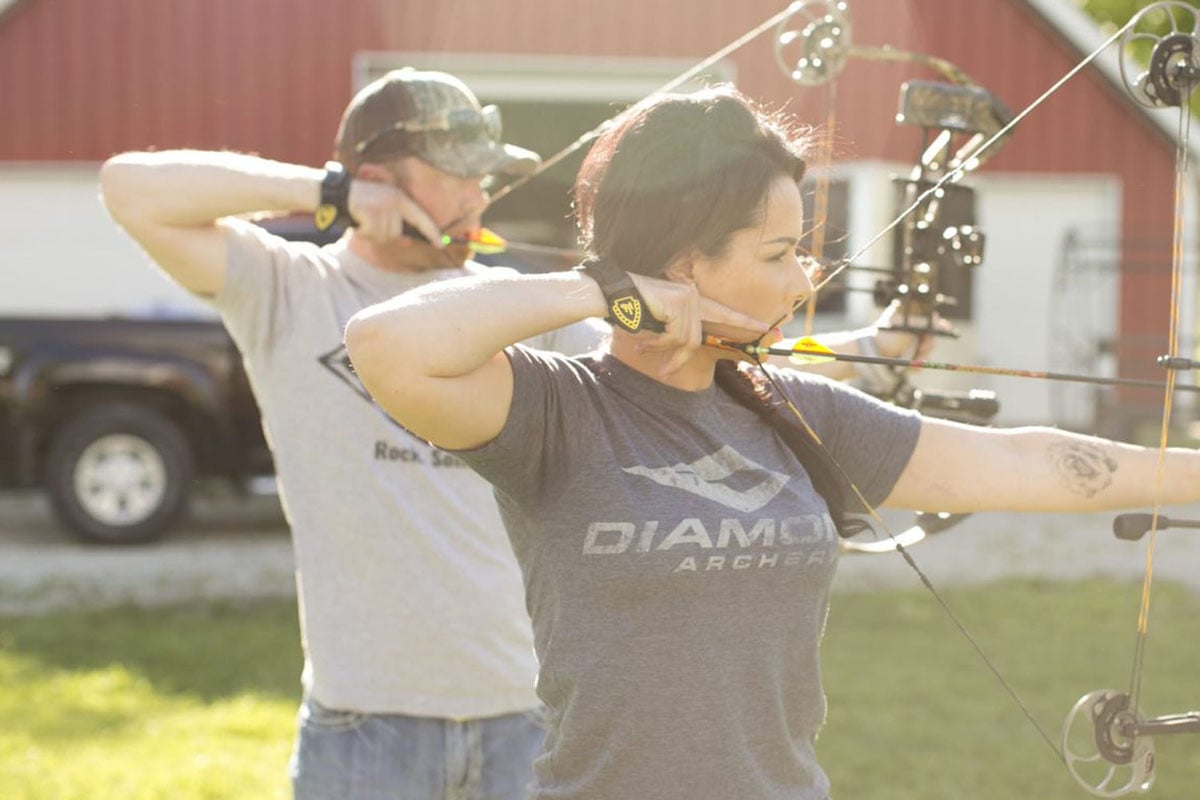
Once you’re all set up with your archery supplies, you’ll be ready to start shooting. You might want to invest in an in-person lesson, but this will get you started on your own!
-
Take your stance. Your torso should be straight up and down, and your collarbone should be parallel to the arrow. Be careful that your hips not bend forward or backward, or that your torso not lean into or away from the bow.
-
Nock an arrow. With your bow pointed toward the ground, place your arrow on your arrow rest (if you have one) and then nock the end of the arrow into your bowstring.
-
Draw your bow. Grasp your bowstring and pull backward to draw.
-
Aim your bow. With or without the use of sights, aim your arrow quickly toward your target.
-
Release the arrow!
Practicing
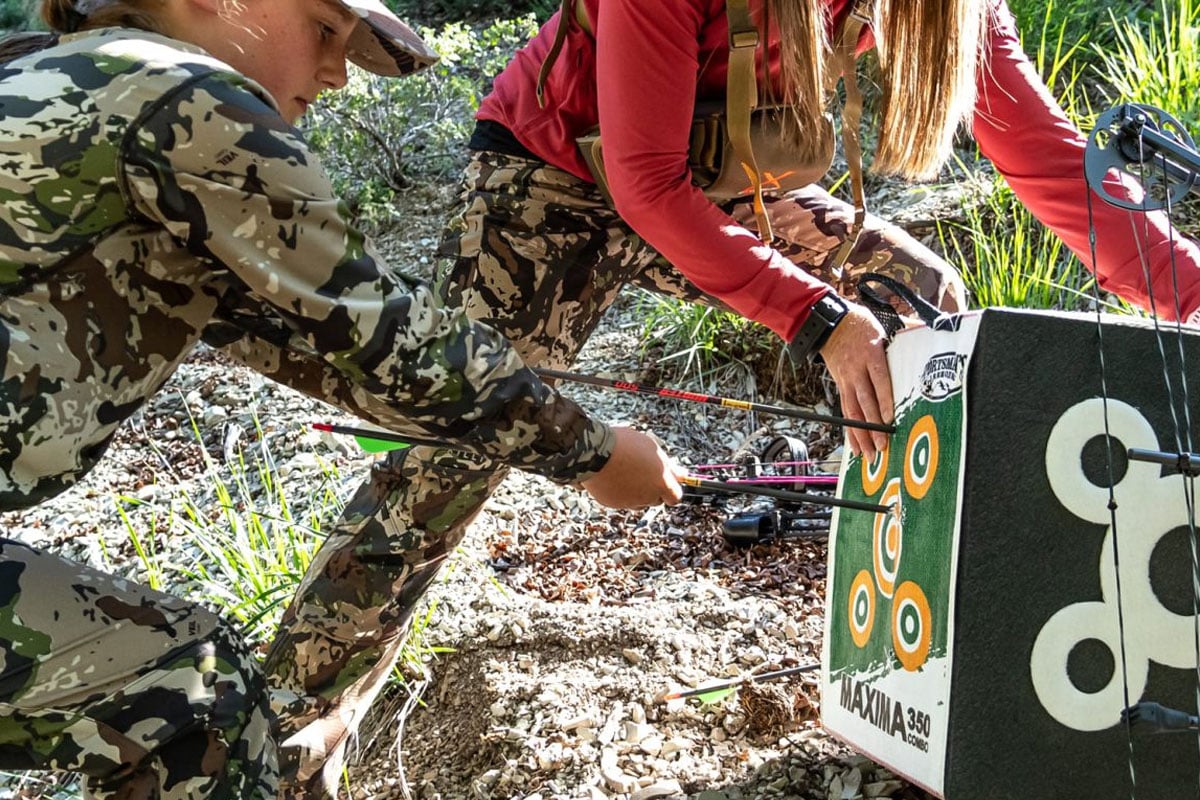
If your backyard is big enough, you may be able to practice archery there. You can buy targets from the store, or make your own with balloons or other markers.
Stump shooting is a very fun way of getting outside and practicing archery. As you walk through the woods, choose stumps and other spots as targets, and aim for them. Make sure stump shooting is legal in your area before doing this on private lands, and of course exercise caution.
Indoor archery ranges can offer a great solution for the winter months, and there are even indoor archery leagues. This is also a fun way to meet other people who are interested in archery and share tips and social time.
Archery Practice Drills
As you practice archery more and more, you’ll have a sense of what you need to improve on and what skills you need to hone. These are a few suggestions of how you can work on your skills on your own.
Practice different stances. There are several types of stances for different purposes. Learn the difference between them, and practice them frequently. The most important thing is that you have a stable and repeatable stance to create consistency in executing your shot. There are three basic stances:
Practice your draw. The draw requires the most strength out of any part of archery, and it is a crucial part as this is when you take your aim. You can simply practice drawing your string even without an arrow to build muscle. Just don’t dry fire your bow – release it slowly after you draw. Dry firing can cause damage to the bow and even your surroundings.
Practice your aim. Aim is of course one of the most important parts of archery. Look down the end of your arrow and line it up with your target. Practice getting into this position without losing the arrow as a drill.
Use a mirror. Drawing your bow in front of a mirror, or recording yourself, can help you find ways to improve your stance.
Tips for Getting Started in Archery
There are rules, both spoken and unspoken, in any sport. Here are a few things to keep in mind as you start practicing, whether at home or at the range.
-
Don’t aim at anything you don’t want to hit. Just like a gun, a bow is a weapon. Don’t draw and point an arrow at anything you don’t intend to do damage to.
-
Learn your range’s rules. If you’re practicing with others, make sure you are respectful and follow the guidelines they have set out.
-
Dress the part. Make sure to avoid loose clothing that can interfere with your shot, and bring any protective gear you want to use to make your shots more comfortable.
-
Practice your form. Shooting with incorrect form can lead to injury, so make sure you are maintaining a proper stance every time you shoot.
Hunting
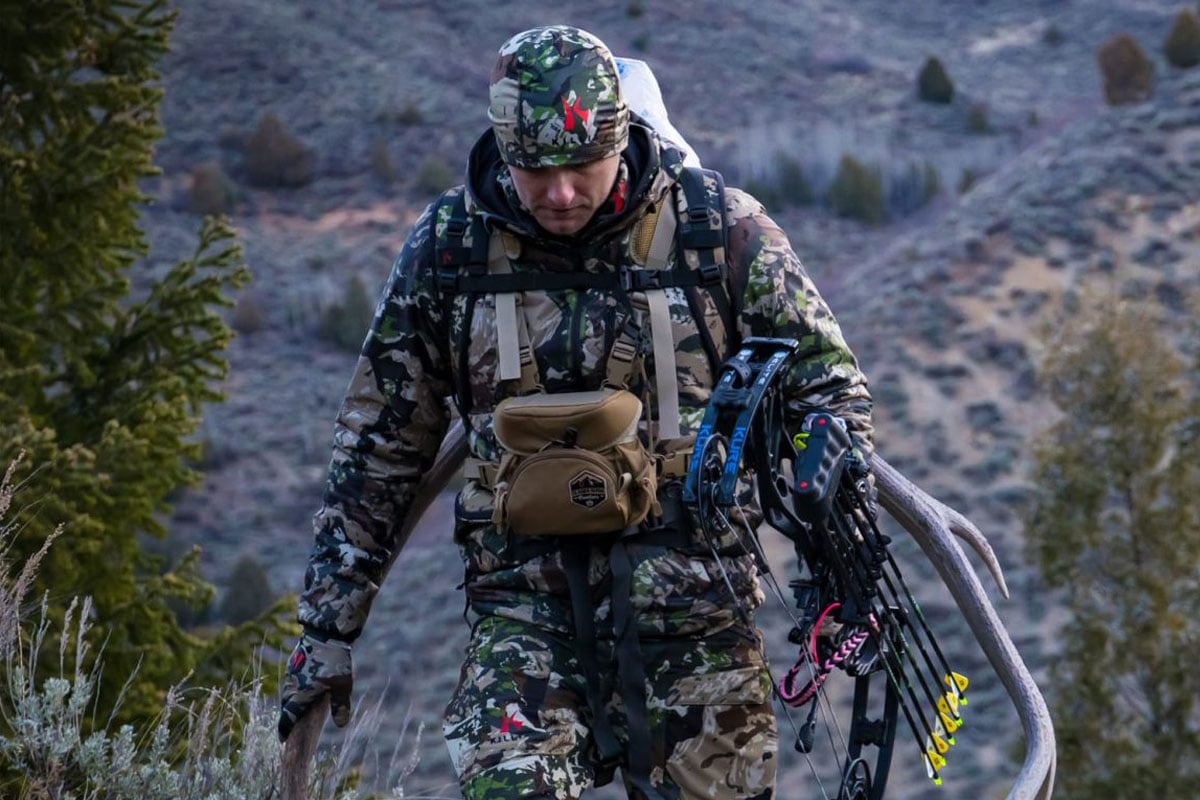
Bow hunting can be a very rewarding way of taking to the back country. You’ll need to get closer to your targets than you do for rifle hunting, so it will test your abilities in stealth, camouflage, and ability to track.
Check out our bow hunting gear checklist for the full list of what you’ll want to bring with you before your next trip.
Following are a few of our tips for bowhunting based on species.
Bow Hunting Deer
Deer are very perceptive, making them an especially challenging species to bow hunt as you’ll need to get much closer than you do with a rifle. This means taking a deer with a bow is especially rewarding. The lungs are the best target for the bowhunters, since they are the largest vital organ. Aim behind the shoulder.
Early season is the best time to bow hunt deer, as they are less afraid of humans during this time. If you want to hunt the rut (which is harder for bow hunters), follow a doe – this will often attract a buck since it’s mating season. If you’ll be hunting late season (perhaps the most difficult time), set up on the deer’s movement pattern as they move between more limited food and shelter. Surprising them while they’re traveling has the largest chance of success.
Stealth is key when hunting deer. Invest in unscented gear, and use low-pressure techniques like game cameras. Leave your spot clear as opening day approaches so you don’t spook the deer.
Bow Hunting Turkey
You can get specialty broadheads for turkey hunting, or you can use the same gear that you use for deer and other hunting. Many hunters choose mechanical broadheads, which expand and thus stay in the turkey more easily.
Ground blinds can help you draw your bow without spooking the turkey. Make sure you keep these camouflaged as well. You’ll need to wait for a turkey to come within 20-30 yards of your blinds when you’re using a bow and arrow.
The turkey’s vitals are the best place to aim with a bow and arrow. This may be a new endeavor for shotgun hunters, who typically aim for the turkey’s neck – but the single point of impact means the larger vital region is a better target.
Bow Hunting Elk
Elk can move quickly, so a bow hunter will need to react, aim, and draw quickly when one moves through their range. Practice multiple positions so you can draw and shoot your bow quickly from mountainous terrain.
Search for elk from a high vantage point, and approach elk at dawn, when they are less likely to expect you. Elk don’t require cover in front of you the way that deer do: instead, position yourself in front of cover to hide your outline from the elk.
A full broadside shot is the most practical option for a bowhunter. Place your shot tight behind the shoulder so that both lungs are pierced. If you only pierce one, the elk may travel far before it dies, and the meat will likely be ruined.
Bow Hunting Bear
A bow and arrow is certainly up to the task of downing a bear – as long as the archer wielding it is prepared, trained, and knowledgeable. Check the poundage and broadhead you’re using before setting out on a bear hunt. They’ll need to be appropriate for hunting. You should be able to use the same equipment for bear hunting as you do for deer hunting.
A quartering away shot is best for bears. A head-on shot is generally not safe to do with a bow. Plan to shoot the bears from twenty yards – whether you’re using dogs, bait, or a stalking method.
Make sure you can identify the size and age of the bear to stay in line with your local regulations. A young bear has a pointed face and fuzzy coat, while an adult bear has a square face and sleek coat. Make sure to monitor your scents to avoid the bear’s keen sense of smell.